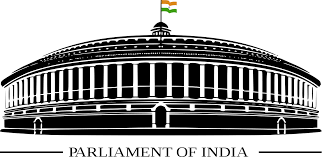The form of government adopted by a country has a significant impact on its political system and structure. The parliamentary system and the presidential system are two of the most commonly used forms of government in the world. In this article, we will discuss the differences between these two systems, their advantages and disadvantages, and the countries that use them.

Table of Contents
Parliamentary System of Government
In a parliamentary system, the head of government, also known as the Prime Minister, is elected by the majority party in the legislative branch. The Prime Minister is responsible for forming the government and selecting ministers to assist in governing the country. The legislative branch, known as the parliament, is responsible for making laws and overseeing the government.
Advantages of the Parliamentary System:
- Quick decision-making: Since the Prime Minister is elected by the majority party in parliament, decision-making is faster and more efficient.
- Greater accountability: The Prime Minister is accountable to the parliament, and can be removed from office if they fail to gain the support of the majority.
- Stability: Since the Prime Minister is elected by the majority party, there is usually greater stability in the government as compared to presidential systems.
Disadvantages of the Parliamentary System:
- Lack of checks and balances: Since the Prime Minister is also a member of parliament, there is a lack of separation of powers, which can lead to a concentration of power.
- Limited representation: The parliamentary system may not always represent the views of all citizens, as minority parties may not have a significant presence in parliament.
Countries with Parliamentary Systems:
Some of the countries that use a parliamentary system include the United Kingdom, Canada, Australia, and India.
Presidential System of Government
In a presidential system, the head of government is separate from the legislative branch. The President is elected by the people and is responsible for leading the country and making decisions. The legislative branch, known as the Congress, is responsible for making laws and overseeing the government.
Advantages of the Presidential System
- Separation of powers: The President and the legislative branch have separate powers, which leads to a balance of power and greater checks and balances.
- Representation: In a presidential system, all parties have the opportunity to participate in the government.
- Stability: Since the President is elected separately from the legislative branch, there is usually greater stability in the government as compared to parliamentary systems.
Disadvantages of the Presidential System
- Slow decision-making: The President may face obstacles in passing legislation if the majority of Congress opposes their policies.
- Lack of accountability: The President is not directly accountable to the legislative branch, which can lead to a lack of accountability.
Countries with Presidential Systems
Some of the countries that use a presidential system include the United States, Brazil, Mexico, and Russia.
Conclusion
In conclusion, the parliamentary system and presidential system of government are two different forms of government, each with its own advantages and disadvantages. The parliamentary system allows for quicker decision-making and greater accountability, while the presidential system provides a separation of powers and greater representation. Ultimately, the choice between these two systems depends on the needs and values of each individual country.
Comparison between the Parliamentary System and Presidential System
| Criteria | Parliamentary System | Presidential System |
|---|---|---|
| Head of Government | Prime Minister | President |
| Election of Head of Government | Elected by majority party in parliament | Elected by the people |
| Legislative Branch | Parliament | Congress |
| Separation of Powers | Limited | Strong |
| Checks and Balances | Limited | Strong |
| Decision-making | Quick | Slow |
| Accountability | Greater | Limited |
| Representation | Limited | Greater |
| Stability | Greater to Moderate | Greater |
Important Links